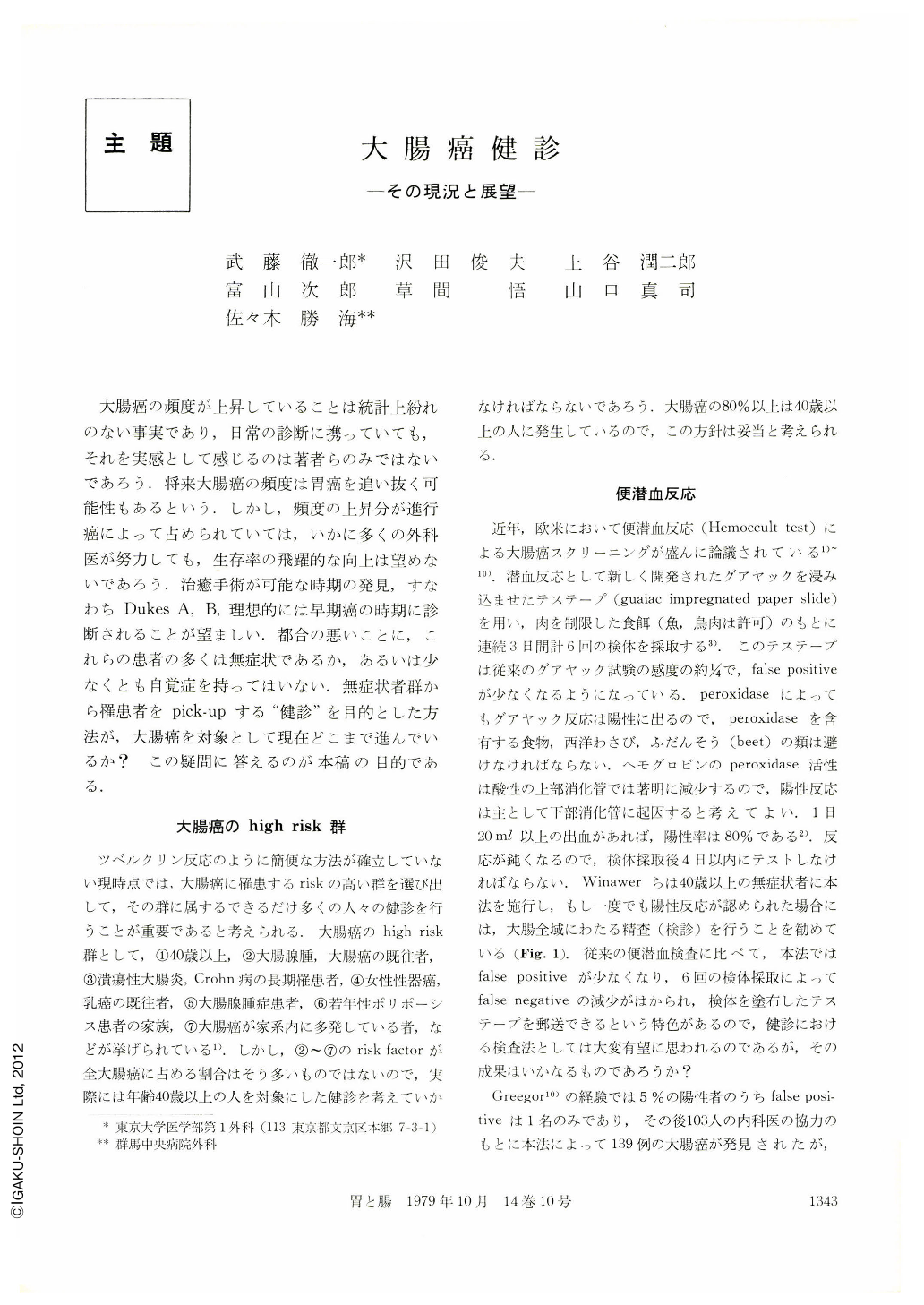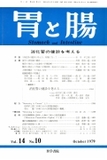Japanese
English
- 有料閲覧
- Abstract 文献概要
- 1ページ目 Look Inside
大腸癌の頻度が上昇していることは統計上紛れのない事実であり,日常の診断に携っていても,それを実感として感じるのは著者らのみではないであろう.将来大腸癌の頻度は胃癌を追い抜く可能性もあるという.しかし,頻度の上昇分が進行癌によって占められていては,いかに多くの外科医が努力しても,生存率の飛躍的な向上は望めないであろう.治癒手術が可能な時期の発見,すなわちDukes A,B,理想的には早期癌の時期に診断されることが望ましい.都合の悪いことに,これらの患者の多くは無症状であるか,あるいは少なくとも自覚症を持ってはいない.無症状者群から罹患者をpick-upする“健診”を目的とした方法が,大腸癌を対象として現在どこまで進んでいるか?この疑問に答えるのが本稿の目的である.
Statistical figure shows increasing incidence of colon cancer in Japan over the past several years. Authors reviewed the present status of screening method for colon cancer from the world literature. There are several methods available for screening of colon cancer such as fecal occult blood test, sigmoidoscopy, fibercolonoscopy, barium enema, cytology, CEA etc. Among these fecal occult blood test seems to be the most promising method of screening for colon cancer. It is recommended that everybody over the age of 40 (high risk group) is checked up by fecal occult blood test for 3 consecutive days every year. Statistics show that carcinoma detected by fecal occult blood test in assymptomatic patients are in earlier stage with better prognosis. Although there still exists false positives and negatives in this screening test, the rate has been decreased considerably by the improved test paper (hemoccult test) and testing procedure (6 samples in 3 consecutive days). Patients with positive test should be checked up by sigmoidoscopy and barium enema. Since a program of the most efficient screening method for colon cancer is not established yet, it is the time for us to find it out before the incidence of Japanese colon cancer will increase as high as in Western countries.

Copyright © 1979, Igaku-Shoin Ltd. All rights reserved.


